Best
BEGINNER BANJO
-
Overall: A basswood rim, a rolled-brass tone ring, and a mahogany bowl
-
Best Feature: Smooth-playing neck with its gorgeous pearl fingerboard inlay.
-
TedScore™: 8.9/10
Best
OVERALL BANJO
-
Overall: Delivers superb clarity, crisp note definition, and a voluminous projection
-
Best Feature: 11-inch open-back banjo, ideal for folk, clawhammer, and old-time music musicians
-
TedScore™: 8.7/10
Best
AFFORDABLE BANJO
-
Overall: Mahogany resonator back gives you the volume and projection you need
-
Best Feature: Genuine Remo head combined with the rosewood-topped maple bridge
-
TedScore™: 9/10
As someone interested in the instrument, you may be asking, “is Banjo hard to learn?”
You might wonder how steep the learning curve is for this unique stringed instrument. Aside from its different styles of playing and different numbers of strings, such as the five-string banjo, the way it’s played to deliver the sound you want to deliver also needs to be learned.
This may be challenging and overwhelming, but don’t worry!
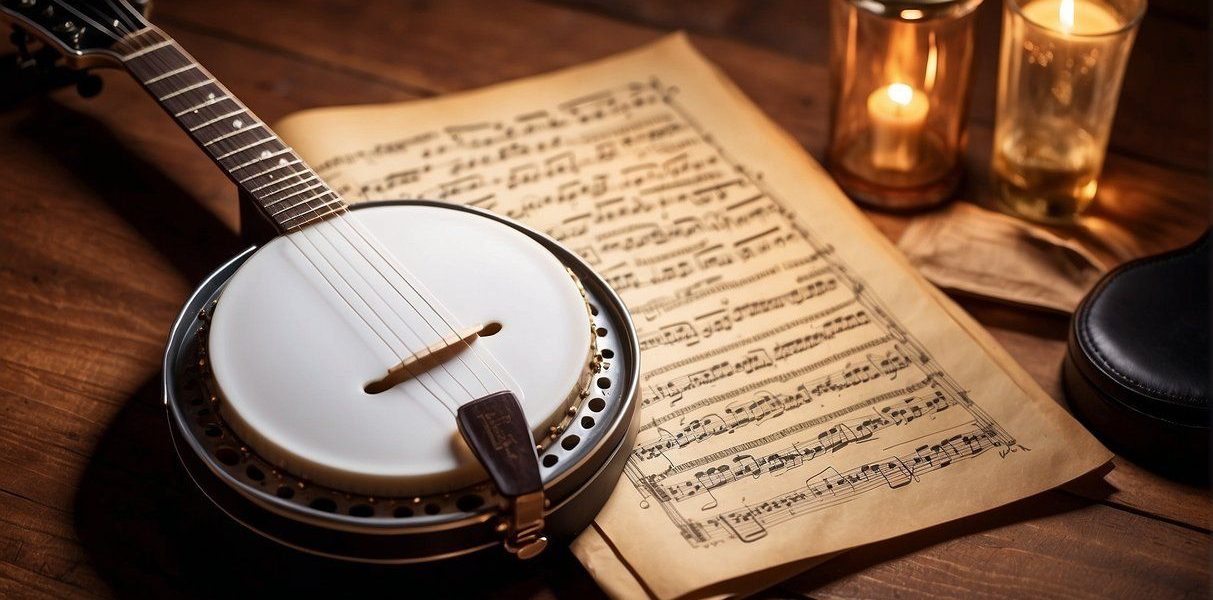
Learning banjo is a journey unique to each player, and this article will tackle how to learn the instrument.
While it has its quirks, it shares some common ground with other stringed instruments that could make your transition smoother.
If you’re entirely new to music, you’ll have to start from the beginning with basics like finger positioning and strumming patterns.
However, if you’re already versed in playing guitar or similar instruments, you’ll find the transition to banjo more familiar, though unique challenges like mastering the iconic rolling fingerpicking style await you.
Understanding the Banjo
Getting to grips with the banjo starts with familiarizing yourself with its components. You’ll also need to consider the different types of banjos and understand how they’re tuned.
What is the Banjo, and Why Play It?
The banjo is a fascinating stringed musical instrument with a rich history that dates back to Africa.
It made its way to the Americas through the transatlantic slave trade, evolving over time to become a staple in genres like bluegrass, folk, and country music. But why should you consider playing the banjo?
For starters, playing the banjo can significantly enhance your fine motor skills and cognitive abilities.
The intricate finger movements required to play the banjo help develop dexterity and hand-eye coordination.
Additionally, the mental effort involved in learning and playing music can improve memory and problem-solving skills.
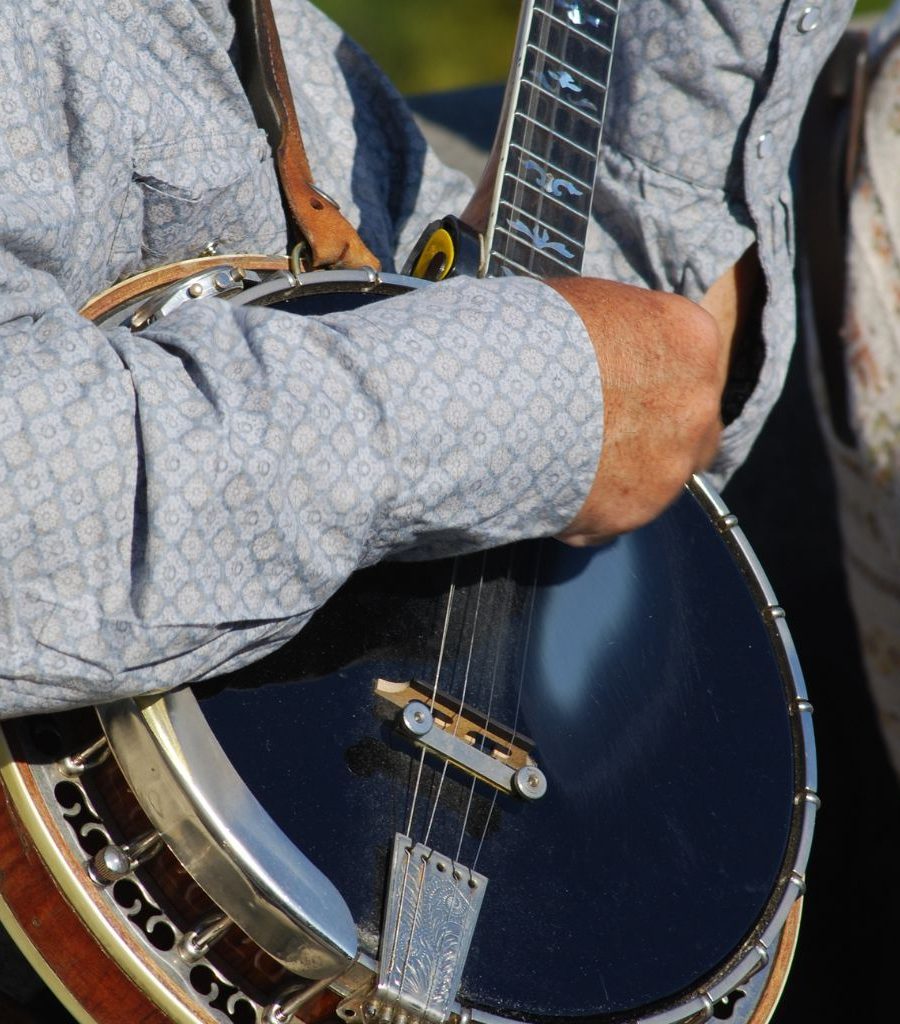
Beyond the physical and mental benefits, the banjo is a versatile instrument that can be played in various styles, from the rhythmic clawhammer to the intricate fingerpicking of bluegrass.
This versatility makes it an excellent choice for musicians of all levels, whether you’re a beginner looking to explore a new hobby or an experienced player seeking to expand your musical repertoire.
Anatomy of the Banjo
Let’s peek into the banjo’s blueprint.
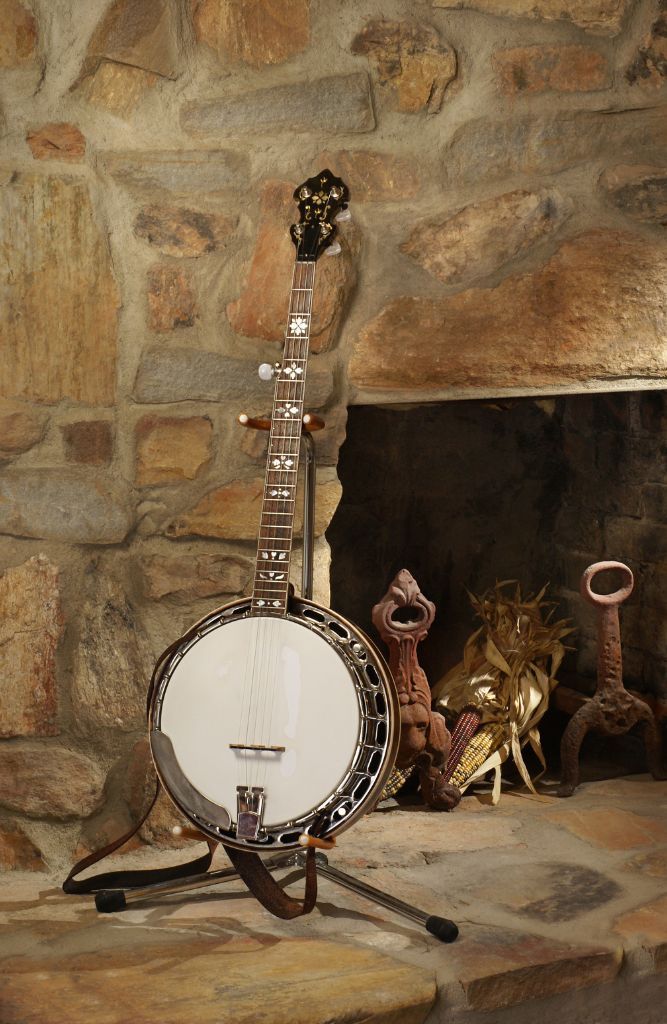
HEAD: acts much like a drum, resonating the strings’ sound.
STRINGS: stretch across the bridge, which transmits vibrations to the head.
NECK: where your fingers will dance around to create notes.
TAILPIECE: anchors the strings at the body end, keeping them tight and in tune.
TUNING PEGS: crucial for maintaining the instrument’s sound quality and located on the peghead.
Banjos typically have four to six strings, but the 5-string banjo is by far the most popular for its range and versatility.
Different Types of Banjos: Five-String Banjo
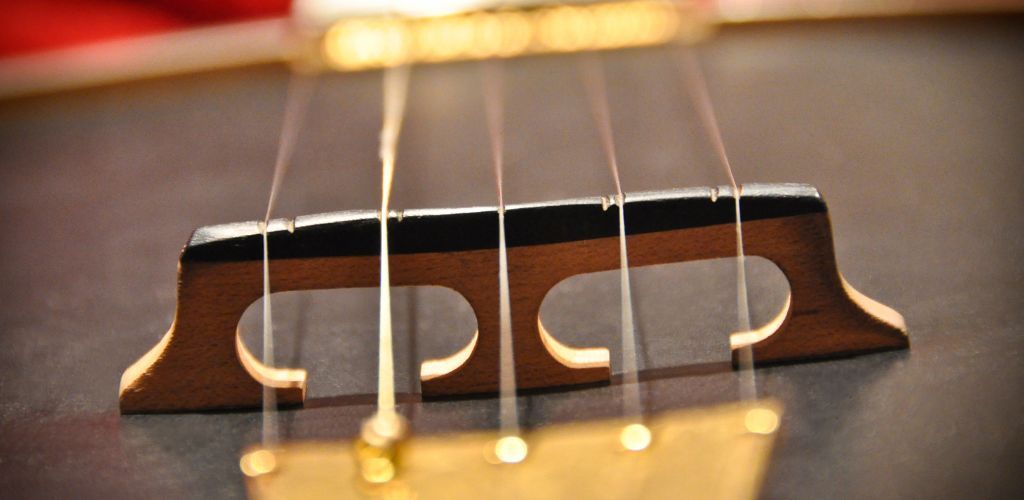
Banjos come in several varieties, each with its own flavor.
The 4-string banjo is often used in Dixieland jazz. It is strummed or picked with a plectrum and comes in two principal styles: the tenor banjo and the plectrum banjo.
On the other hand, the 5-string banjo is the darling of bluegrass and folk music. Its fifth string gives it a distinctive high pitch.
A 6-string banjo, often called a banjitar, merges a traditional banjo’s twangy, spirited sound with the familiar guitar layout, offering a unique and versatile musical experience.
Banjo Tunings
Tuning is the heart of the banjo’s voice (Well, to all instruments, I believe!).
The 5-string banjo is typically tuned to an open tuning, which means strumming the strings without pressing any frets produces a chord.
The most common tuning for a 5-string banjo is open G (GDGBD).
Tuning can vary depending on the style of 4-string banjos. For tenor banjos in jazz, the tuning is usually tenor C (CGBD).
Remember, the right tuning can make you sound good or break your sound, so getting it spot on is crucial.
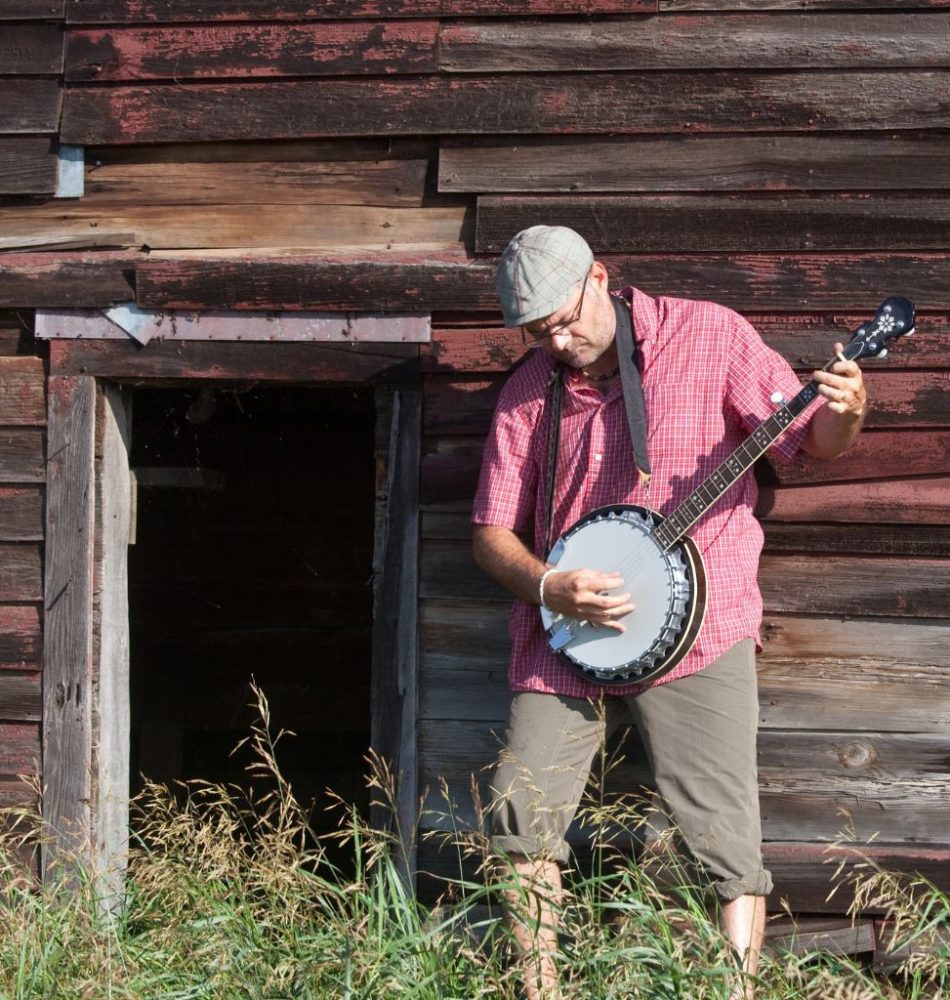
Beginning Your
Banjo Music Journey
Embarking on your banjo adventure is the start of an exciting musical chapter. You’re about to jump into a world where twinkling strings meet your fingertips.
Choosing the Right Banjo for a Beginner Banjo Player
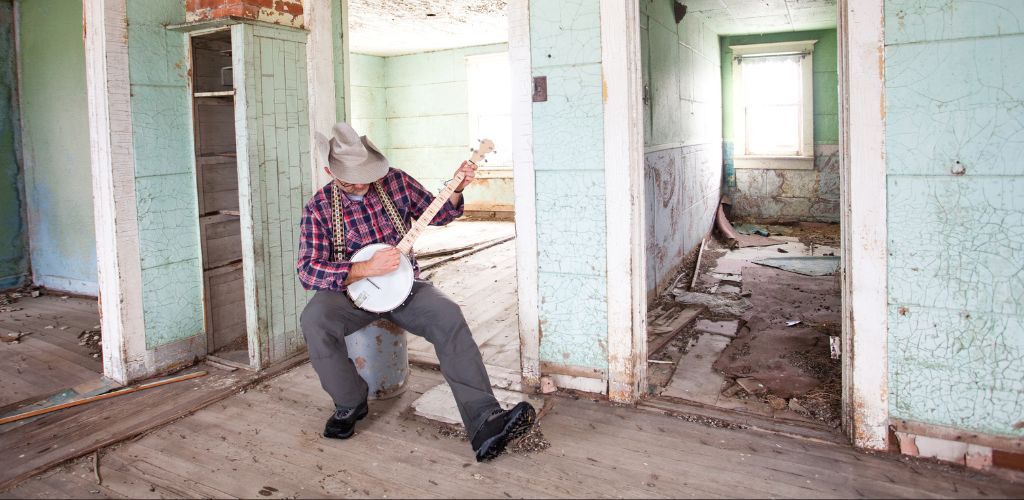
But first, you have to know how to choose the right type of banjo. It would be hard to play banjo without one, right?
Finding the perfect banjo is a delightful first step to ensure your enthusiasm doesn’t wane.
Beginners often flourish with a lighter, open-back banjo known for its gentle tone. The 5-string variety is a classic choice, especially if you’re keen on playing bluegrass music or old-time music.
Consider your budget; there’s no need to break the bank. A range of $150 to $300 can fetch you a decent beginner banjo that’s both forgiving and friendly.
Ibanez B200 5-string Resonator Banjo
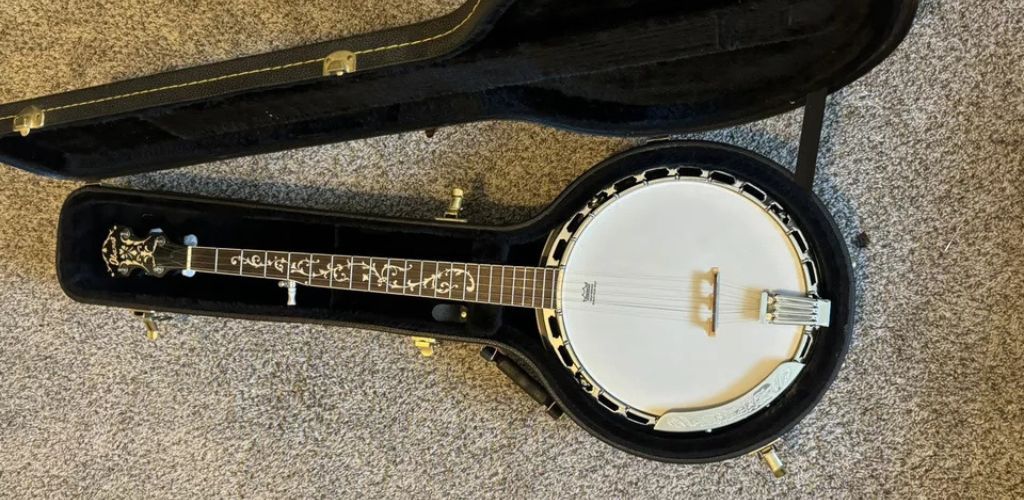
Beginner banjo players love the Ibanez B200 5-string Resonator Banjo. It’s a well-crafted instrument, offering a rich, vibrant tone and a comfortable playability that rivals many of its higher-priced competitors.
Ibanez B200 5-string Resonator Banjo
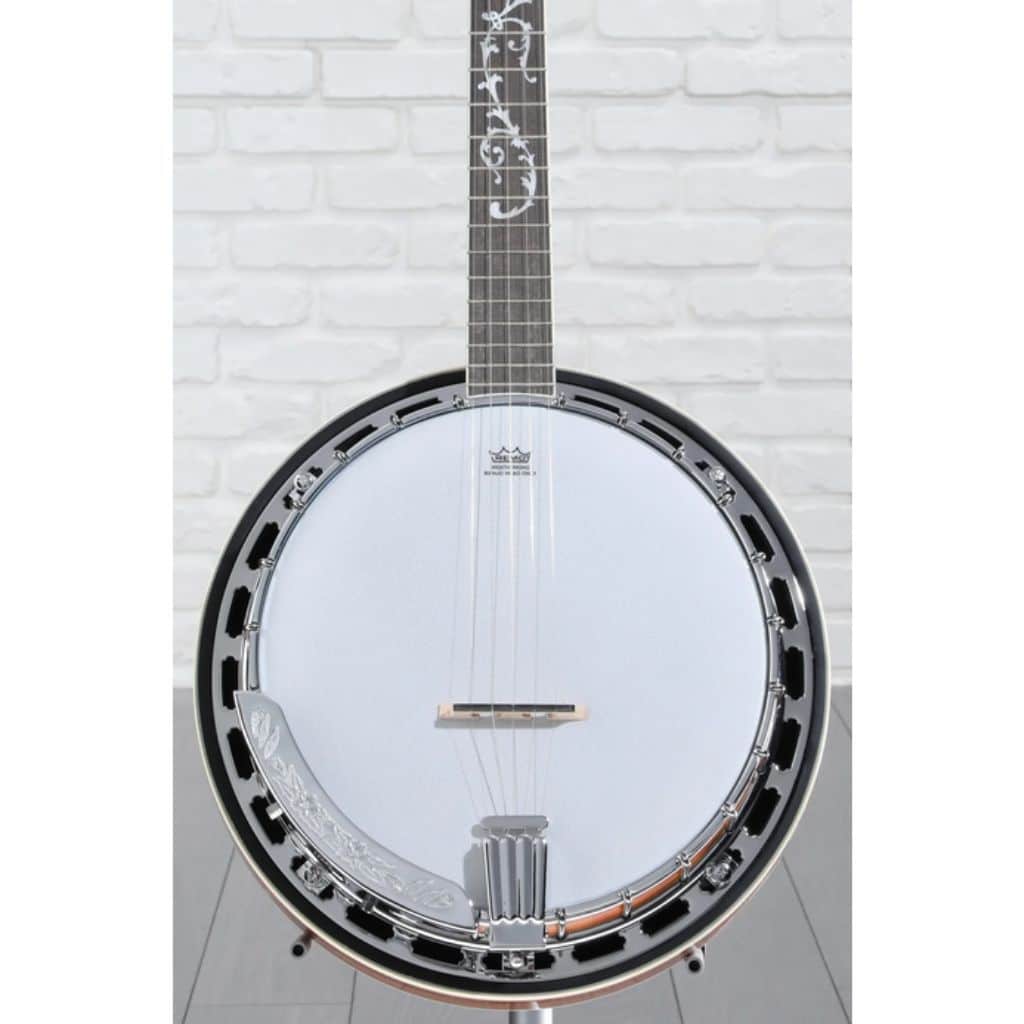
FEATURES: A basswood rim, a rolled-brass tone ring, and a mahogany bowl
OTHER INFO: Smooth-playing neck with its gorgeous pearl fingerboard inlay.
- 11" coated Remo Weatherking head
- Steel tension hoop with 24-piece bracket
- Dual Coordinator Rod construction
- None!
When you click ‘Check Price’, you’ll see there are loads of great places to buy this item. Our personal favorite is Sweetwater for the US, and Thomann and Gear4Music for the UK & Europe.
They are the largest music retailers, with excellent customer service, competitive prices, really fast shipping, and the longest guarantees.
The professional musician who wrote this article combined many things,
from the product build, manufacturer’s reputation through to feedback
from other users, to create our famous TedScore™.
Washburn Americana B8-Pack Banjo Pack
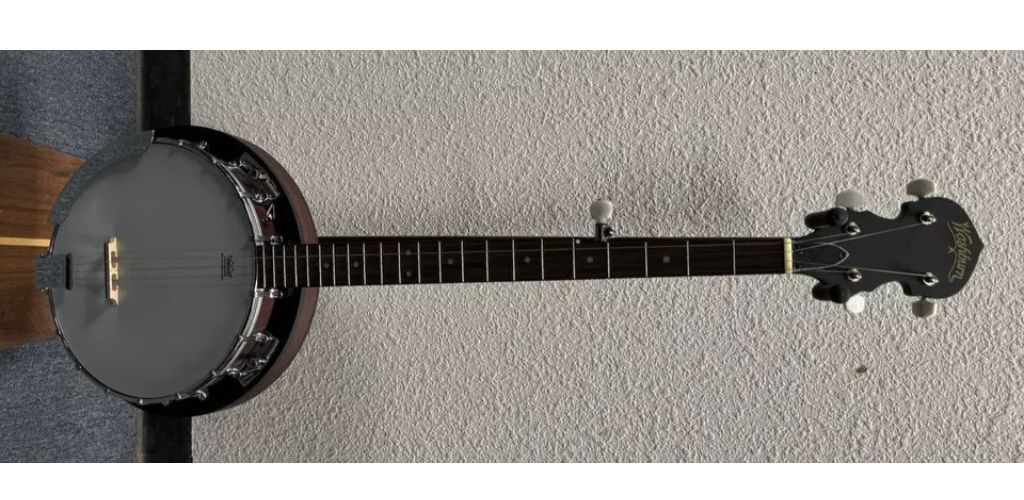
From my professional standpoint, the Washburn Americana B8-Pack Banjo Pack stands out as an excellent choice for students, consistently recommended for its quality build and great value, providing a solid foundation for any aspiring banjo player.
Washburn Americana B8-Pack Banjo Pack
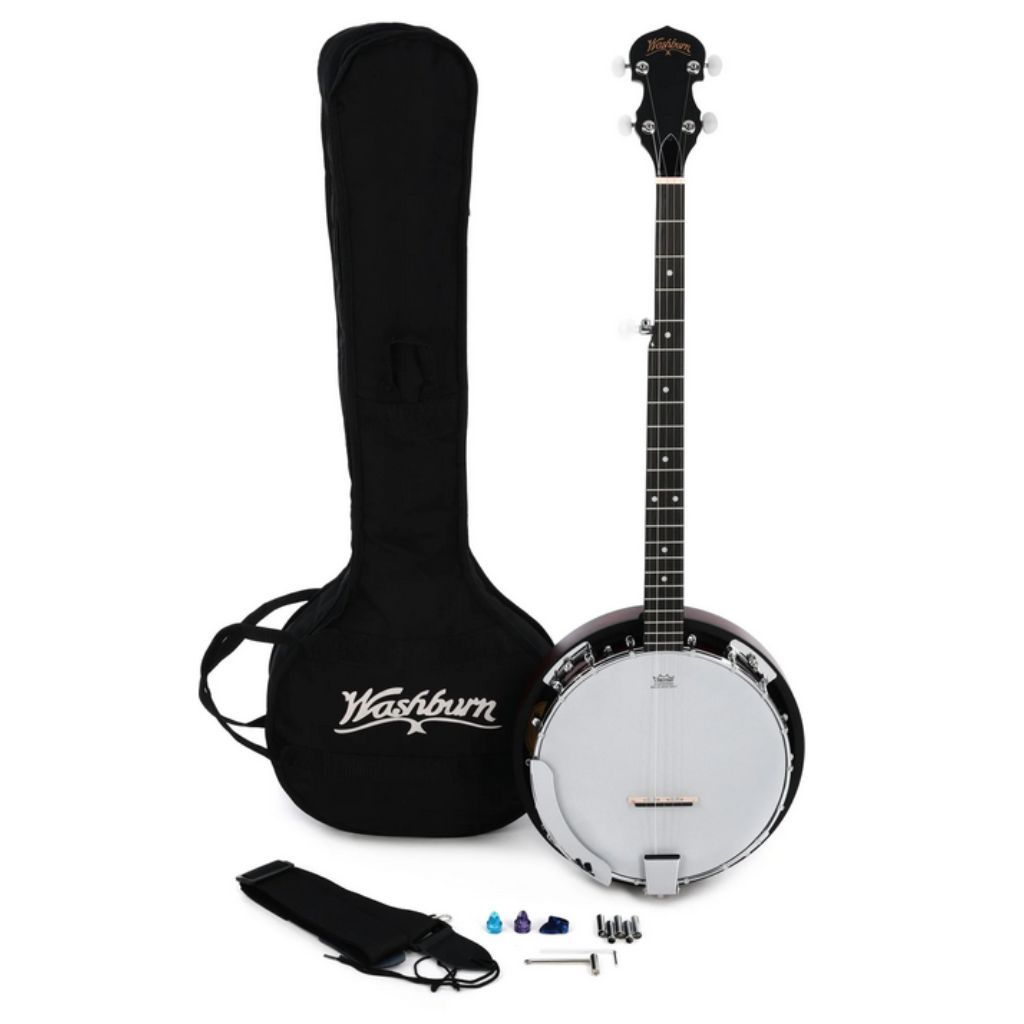
FEATURES: Mahogany resonator back gives you the volume and projection you need
OTHER INFO: Genuine Remo head combined with the rosewood-topped maple bridge
- Traditional styling and tonewoods for great banjo tone
- Resonator-backed banjos provide classic banjo tones
- Includes gig bag, picks, instructional book, and a lot more
- No cons at all!
When you click ‘Check Price’, you’ll see there are loads of great places to buy this item. Our personal favorite is Sweetwater for the US, and Thomann and Gear4Music for the UK & Europe.
They are the largest music retailers, with excellent customer service, competitive prices, really fast shipping, and the longest guarantees.
The professional musician who wrote this article combined many things,
from the product build, manufacturer’s reputation through to feedback
from other users, to create our famous TedScore™.
Deering Vega White Oak 11-inch Open-back Banjo
I also always recommend the Deering Vega White Oak 11-inch Open-back Banjo for its superb clarity and punchy sound, coupled with its natural finish and outstanding craftsmanship, which appeal to banjo players of all levels.
Deering Vega White Oak 11-inch Open-back Banjo
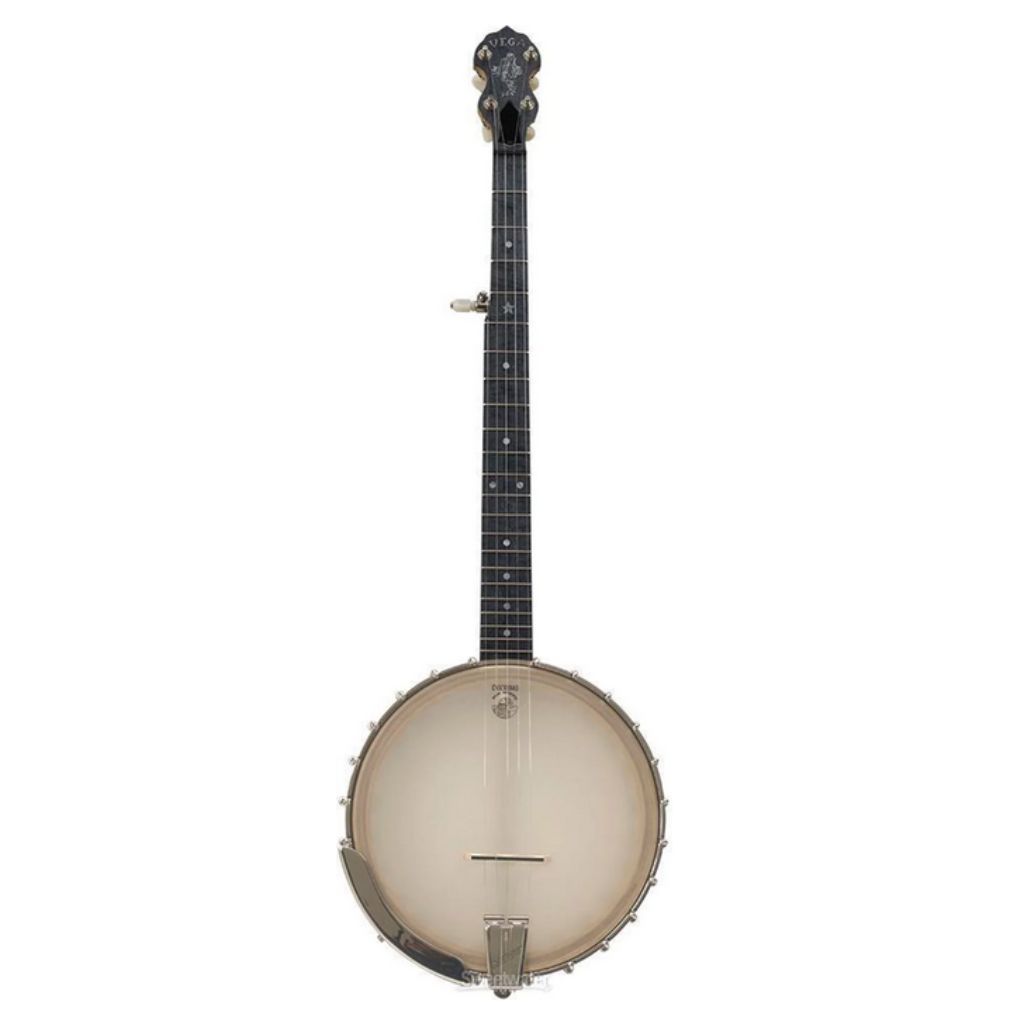
FEATURES: Delivers superb clarity, crisp note definition, and a voluminous projection
OTHER INFO: 11-inch open-back banjo, ideal for folk, clawhammer, and old-time music musicians
- Quarter-sawn white oak neck in rather full-feeling Vega “D” profile
- Bright and punchy white oak rim, with no tone ring for a more complex and woody sound
- Expensive as compared to other banjo
When you click ‘Check Price’, you’ll see there are loads of great places to buy this item. Our personal favorite is Sweetwater for the US, and Thomann and Gear4Music for the UK & Europe.
They are the largest music retailers, with excellent customer service, competitive prices, really fast shipping, and the longest guarantees.
The professional musician who wrote this article combined many things,
from the product build, manufacturer’s reputation through to feedback
from other users, to create our famous TedScore™.
Basic Banjo Setup
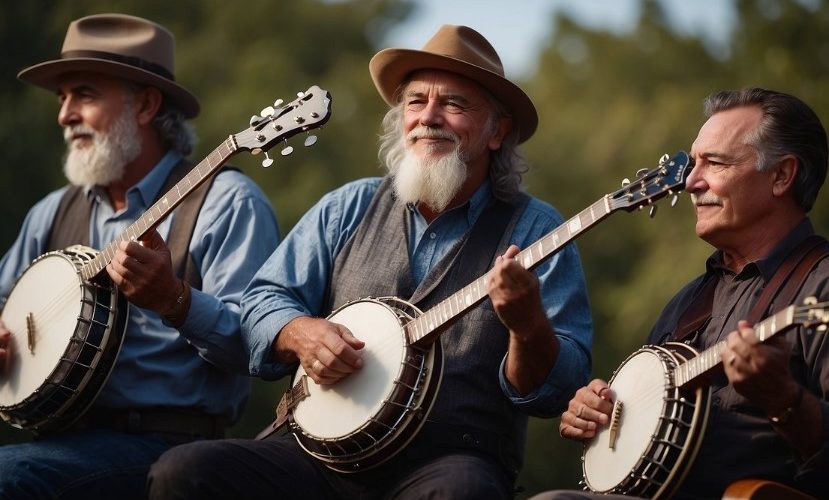
Once your banjo is in hand, setting it up correctly can make learning feel like a breeze.
Ensure the bridge placement is accurate – it’s vital for proper intonation. A professional setup is recommended, but if you’re DIY-ing, use a tuner and lots of patience!
Your strings should be comfortable to press down. If they’re not, consider lighter gauge strings for ease of play.
Remember, don’t be afraid to have a little tweak here and there; It can make your learning process as smooth as a well-tuned melody.
Fundamental Techniques
Mastering the banjo starts with a solid understanding of the essential techniques.
Let’s start holding, strumming, fingerpicking, and learning chords to get you pickin’ and grinnin’ in no time!
Holding and Strumming
Properly holding your banjo is foundational, allowing for comfortable playing and better sound.
So, how do you do this?
Strumming gives you the momentum you need to play fun melodies and keep a tune going using this musical instrument.
To lay the groundwork for your banjo journey, practice and work on perfecting a smooth, even strum that you can maintain over chords like D, C, and G.
Fingerpicking Patterns
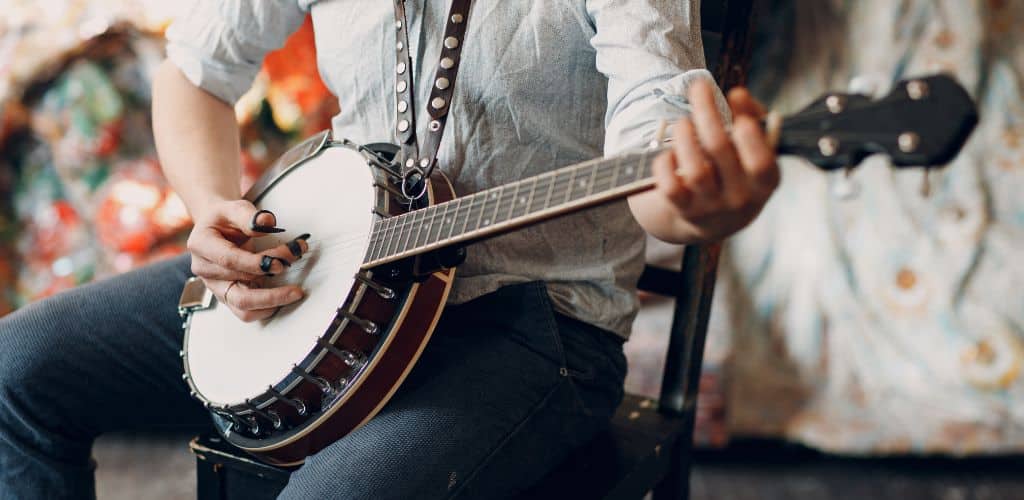
Fingerpicking is a must-learn banjo technique, and there’s a variety to choose from! These varieties will be discussed later in the article.
To build dexterity, begin with simple patterns and progress to more complex ones.
Remember, fingerpicking is all about precision and timing. The middle finger plays a crucial role in various fingerpicking styles, particularly in stabilizing the hand for better accuracy.
Outline specific picking patterns for each chord and alternate between them to learn how they frame the melody and inject texture into your playing.
Learning Chords
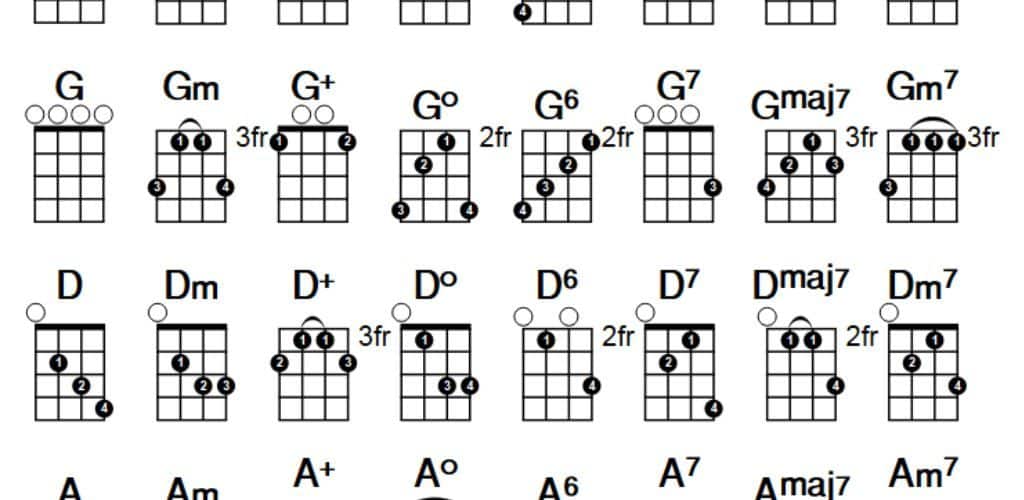
Chords are the building blocks of all banjo tunes, and knowing them will open up a world of songs, whether bluegrass or other popular music!
Start with crucial chords like G, C, and D, focusing on the correct fingering for each. For smooth chord transitions, Keep your fingers close to the fretboard and move them as a unit.
As you gain confidence in switching between these chords, your playing will start to flow more naturally.
Practicing transitions helps you maintain rhythm better and supports complex melodies you’ll tackle down the road.
Reading Banjo Tabs
Banjo tabs are a fantastic tool for learning new songs and techniques. They are a form of musical notation specifically designed for stringed instruments like the banjo.
Each line on a banjo tab represents a string, and the numbers indicate which fret to press down.

To get started with banjo tabs, first, familiarize yourself with the layout. The five lines correspond to the five strings of a 5-string banjo. A number on a line tells you which fret to press on that string, while a “0” means you play the string open without pressing any fret.
Banjo tabs can also show more advanced techniques like hammer-ons, pull-offs, and slides. These are usually indicated by specific symbols or notations. As you practice reading tabs, you’ll become more comfortable with these symbols and what they represent.
The key to mastering banjo tabs is practice. Start with simple songs and gradually move on to more complex pieces.
Over time, reading tabs will become second nature, allowing you to focus more on playing and enjoying the music.
Exploring Banjo Styles
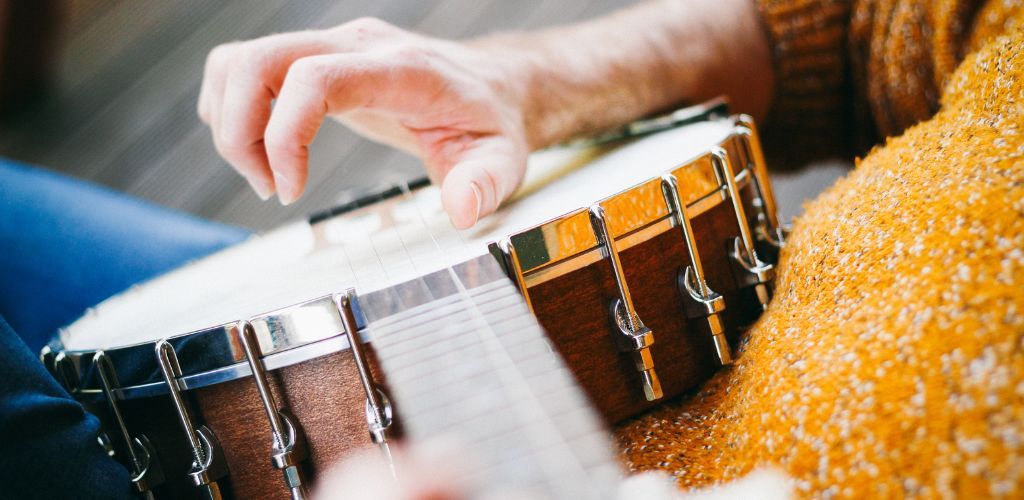
Learning the banjo involves understanding the various playing styles that give this instrument its unique sound.
You’ll discover that each style brings its flavor to your music-making adventures.
Clawhammer Banjo Style
In the Clawhammer style, your hand takes on a claw-like shape, and you strike the strings downward using the back of your fingers while your thumb plucks the fifth string.
This old-time technique creates a rhythmic, drone-like sound that’s perfect for folk and traditional Appalachian music.
Scruggs Banjo Style
On the flip side, the Scruggs style is all about the fingerpicking prowess that defines bluegrass banjo.
Here, your fingers perform a rolling, picking pattern that involves both up and down strokes, offering a bright, intricate sound.
It’s named after Earl Scruggs, who made this style famous!
Other Popular Styles
There are still many other styles to tickle your banjo strings!
Melodic style lets you play fluid scales and intricate tunes, often used in fiddle tunes.
In classic style, you combine fingerpicking with strumming for a more diverse sound.
You’ll also encounter the Two-Finger style, which, as the name suggests, involves two fingers picking melodies that echo old-time tunes.
Each style awaits you to discover and produce a unique sound for your musical toolkit!
Practicing and Improving
Learning the banjo involves a blend of consistent practice and a sprinkle of patience (sometimes, it takes a fountain, so be very patient with yourself!).
Your progression will rely heavily on your practice habits and dedication to expanding your ability to play banjo.
Effective Practice Habits
You’ll want to establish practice routines that mesh with your learning style.
For instance, using banjo tablature could be immensely helpful if you’re a visual learner.
Find a practice rhythm that’s neither too lax nor intense; balance is key.
Daily practice strengthens muscle memory, helping you play more fluidly over time.

Building Repertoire
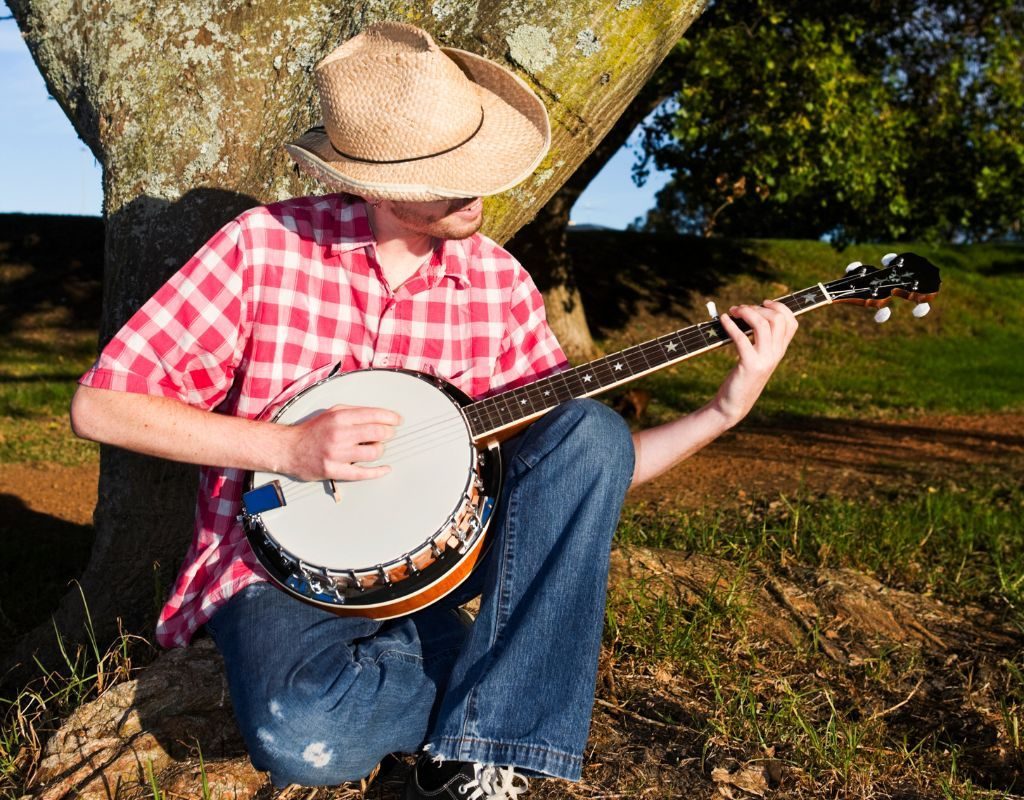
Your banjo journey will be much more rewarding as you start playing songs.
Start with simple tunes to build up your confidence and gradually tackle more complex pieces.
Collecting a variety of songs enhances your skill and keeps practice exciting.
Remember, patience is your ally; every song you master is a testament to your dedication.
Playing Banjo Music with Others
One of the most rewarding aspects of learning the banjo is playing music with others. Whether you’re jamming with friends or joining a local band, playing with others can significantly enhance your skills and boost your confidence.
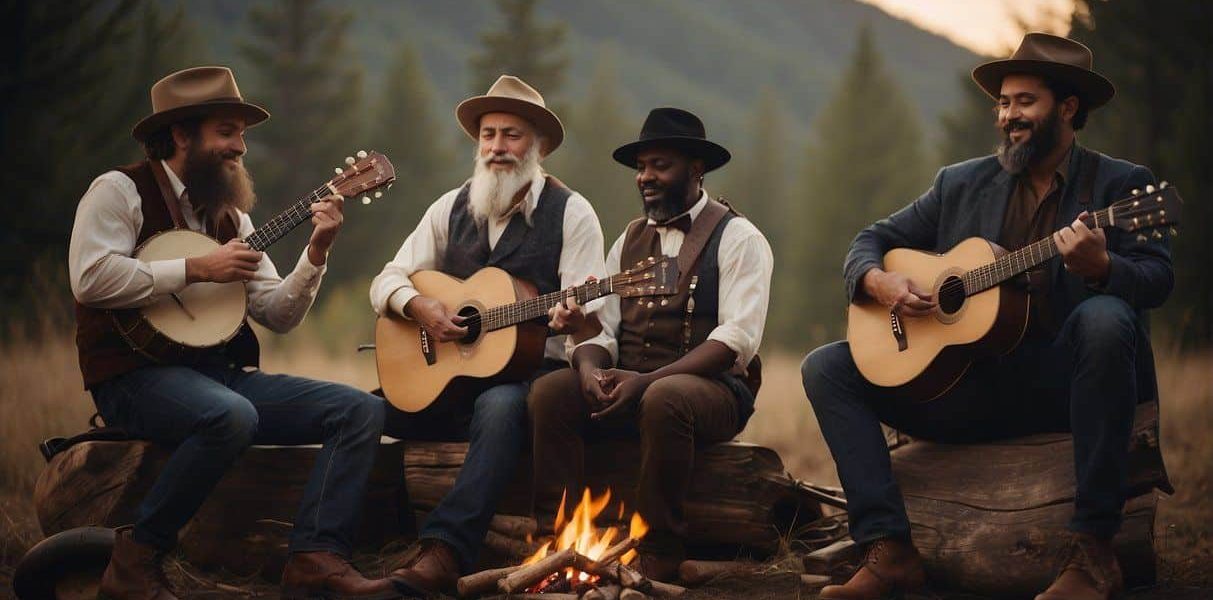
To get started, it’s crucial to develop a strong sense of timing and rhythm. Practicing with a metronome or a drum machine can help you keep a steady beat. Once you’re comfortable, seek out other musicians who share your interest in banjo music.
You can join a local bluegrass or folk band, attend music festivals, or participate in online communities.
When playing with others, focus on listening to the group and blending your sound. Pay attention to the rhythm and try to complement the other instruments.
This collaborative effort not only improves your playing but also makes the experience more enjoyable and fulfilling.
Advancing to
Intermediate Skills
As you strum beyond the basics, you’ll embrace the challenge of complex chords and ramp up to brisker tempos that will set your banjo playing apart.
Mastering Complex Chords
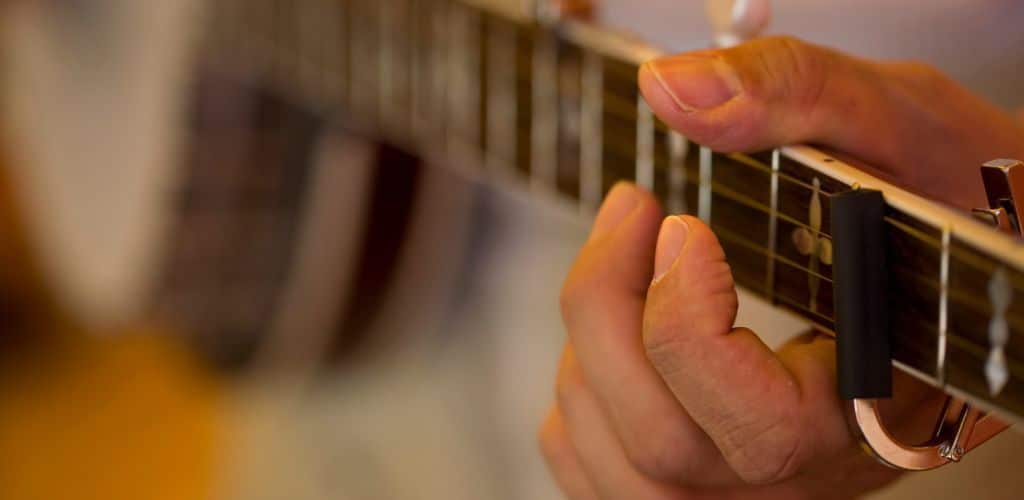
When you start playing complex chords, it means you’re improving your playing of banjo music.
These chords often blend more notes than basic ones, injecting depth and texture into your melodies.
Begin with barre chords (chords where you need to press multiple strings using your index finger) and move on to include 7th and minor chords; these are fundamental in crafting a full-bodied banjo sound.
Faster Picking and Tempos
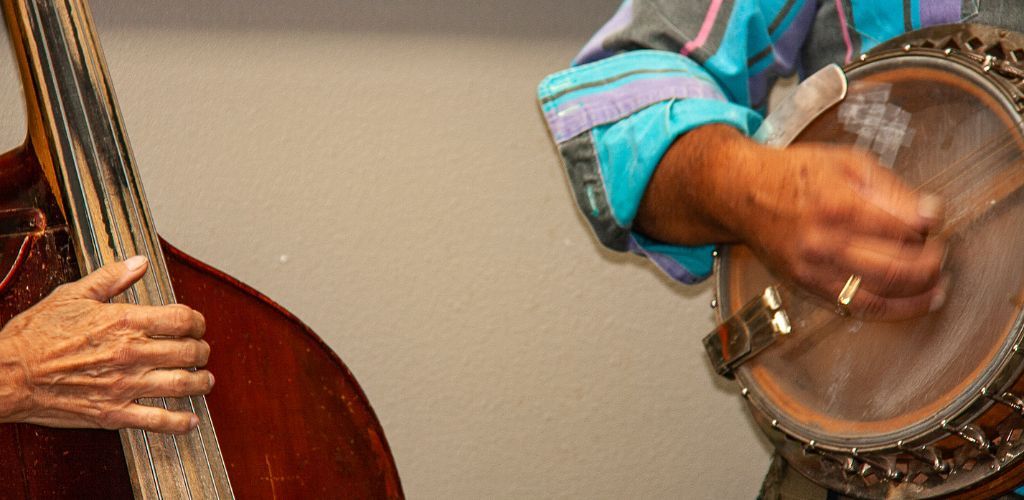
Picking up the pace, literally, is what faster picking and tempo practices are all about.
Crafting a quick and clean picking technique plays a crucial role in your proficiency.
Begin by practicing with a metronome to steadily increase your tempo, ensuring your fingers learn the art of agility without sacrificing the clarity of each note.
Mastery in this area leads to a dynamic performance that can keep your audience hooked.
Resources in Playing Banjo
The good thing is when you want to learn the banjo, you’re not alone! There’s a wealth of resources to guide your journey.
Online Tutorials and Lessons
It’s fantastic that you can learn banjo right from home!
Various websites and platforms offer structured video tutorials for all skill levels.
Whether you prefer reading tablature or picking up tunes by ear, there’s something for everyone.
Banjo Compass: Their step-by-step lessons cater to diverse learning styles.
ArtistWorks: Offers video exchange feedback from professional players.
You can often find tutorials specific to the style of banjo you’re interested in, such as clawhammer or bluegrass.

Learning from Others
Learning from other banjo players is an invaluable part of your musical journey. Experienced musicians can offer insights and techniques that you might not discover on your own.
There are several ways to learn from others, including attending workshops, taking lessons, and watching online tutorials.
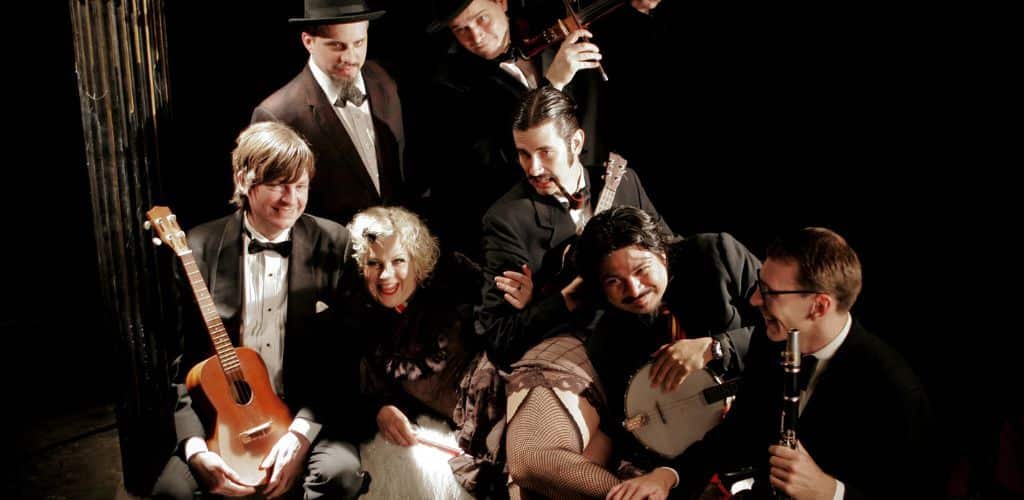
Many professional banjo players offer lessons, either in-person or online. These lessons can be tailored to your specific needs, helping you overcome challenges and improve your technique. Additionally, watching videos of other banjo players can provide inspiration and practical tips.
Online resources are abundant and can be incredibly helpful. Websites like YouTube, banjo forums, and social media groups dedicated to banjo enthusiasts offer a wealth of information.
Engaging with these communities can provide support, motivation, and a sense of camaraderie as you continue to learn and grow as a banjo player.
By incorporating these new sections, the article will offer a comprehensive guide for beginners, covering everything from the basics of the banjo to advanced playing techniques and community engagement.
Is Banjo Hard to Learn:
Things to Remember!
Starting your banjo journey can feel very exciting!
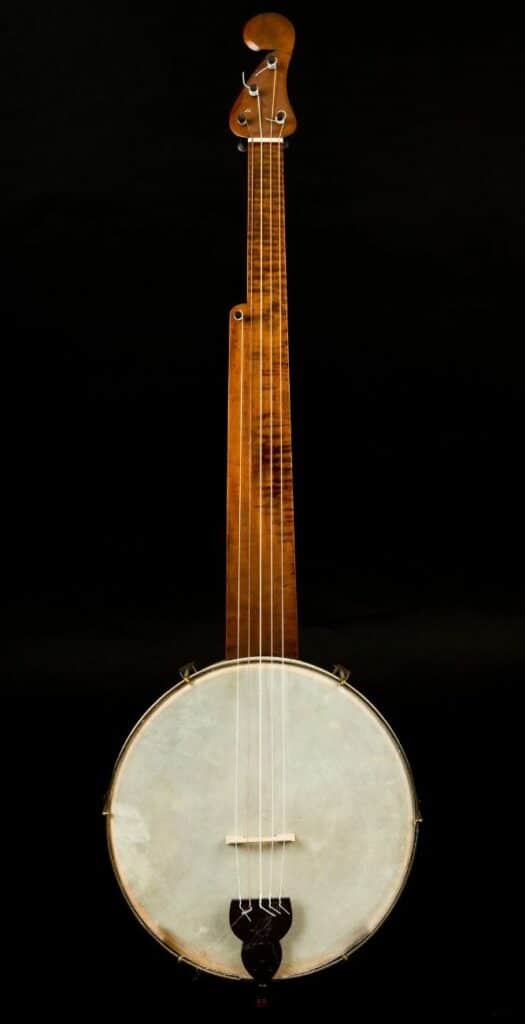
String Layout: The banjo has a unique string arrangement, including a shorter drone string. Getting used to this may take a bit of practice, but it’s manageable.
Chords and Finger Picking: You’ll be glad to know that basic banjo chords aren’t too complex. Fingerpicking patterns, characteristic of the banjo’s style, do require coordination and rhythm.
Learning Curve: Once you get a handle on fingerpicking, the learning curve becomes friendlier. Consistency in practice will be your best ally here.
Musical Background: If you’ve played other string instruments, you’ll likely pick up banjo techniques more quickly. Yet, even without any musical background, your determination can make a remarkable difference.
Learning advanced techniques like rolls and slides can be thrilling. Yes, they need focused practice, but imagine the joy when you nail them!
Remember, every banjo player started playing as a beginner, just like you.
So, buckle up using your banjo strap and get ready for a melodious adventure with your new friend, the banjo!
But wait! There’s more!
If you happen to have enjoyed reading this article and are interested more in learning banjo, the next article is perfect for you! Read the next one to learn more about the strings a banjo has.
FAQ's
The time it takes to learn the banjo can vary widely depending on the individual’s practice schedule, musical background, and personal goals. Still, a basic proficiency can often be achieved in a few months of consistent practice. Mastering the instrument, however, can take several years of dedicated effort.
Yes, the banjo can be self-taught using various resources such as online tutorials, instructional books, and practice exercises. Many individuals successfully learn to play the banjo on their own, though the rate of progress can depend on personal dedication and the effectiveness of the chosen learning materials.
The difficulty of playing a 5-string banjo can vary for each individual, depending on their musical experience and mastery. Beginners may find the initial learning curve challenging, but with practice, the instrument’s unique playing style can be mastered over time.
No, 30 is not too old to learn the banjo; people can start learning an instrument with success at any age. Adult learners often bring strong motivation and discipline to their practice, which can lead to rewarding progress.





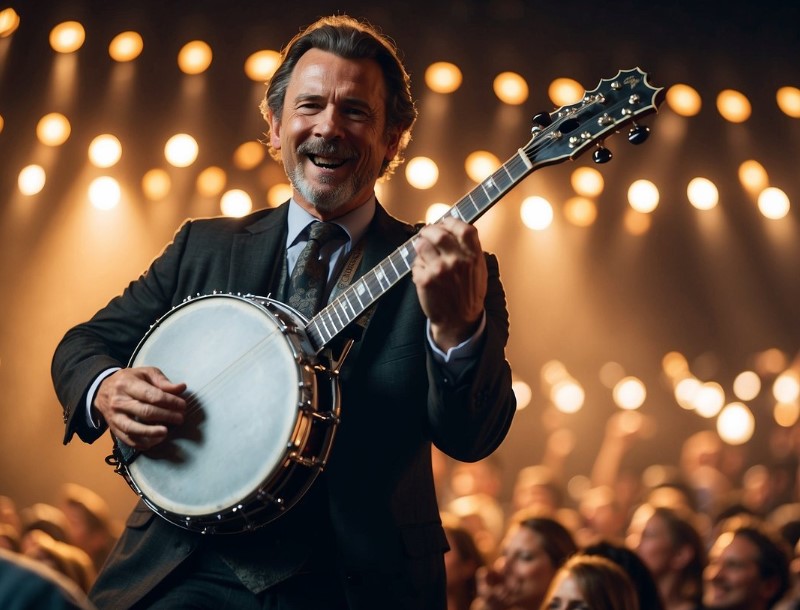







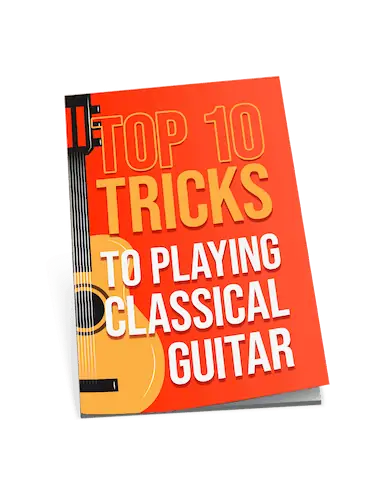
Banjos: because every gamer’s soundtrack needs a secret weapon, amirite?
picked up a guitar few years back, now thinking the banjo might be a cool challenge. gotta say, this guide looks like exactly what I need to get started. thx for breaking down the types and tunings, always thought all banjos were the same till now lol
Right?! Always great to find detailed guides like this. Got me excited to start my banjo journey too!
Cool to see banjos getting some love. Always thought they had a unique sound that could blend well with different genres. Might look into adding some banjo samples to my tracks.
Hey Lewis Turner, nice outline! Just wondering, for the beginning banjo musician, how many hours a day would you recommend practicing? Want to make sure I balance it well with my outdoor activities.